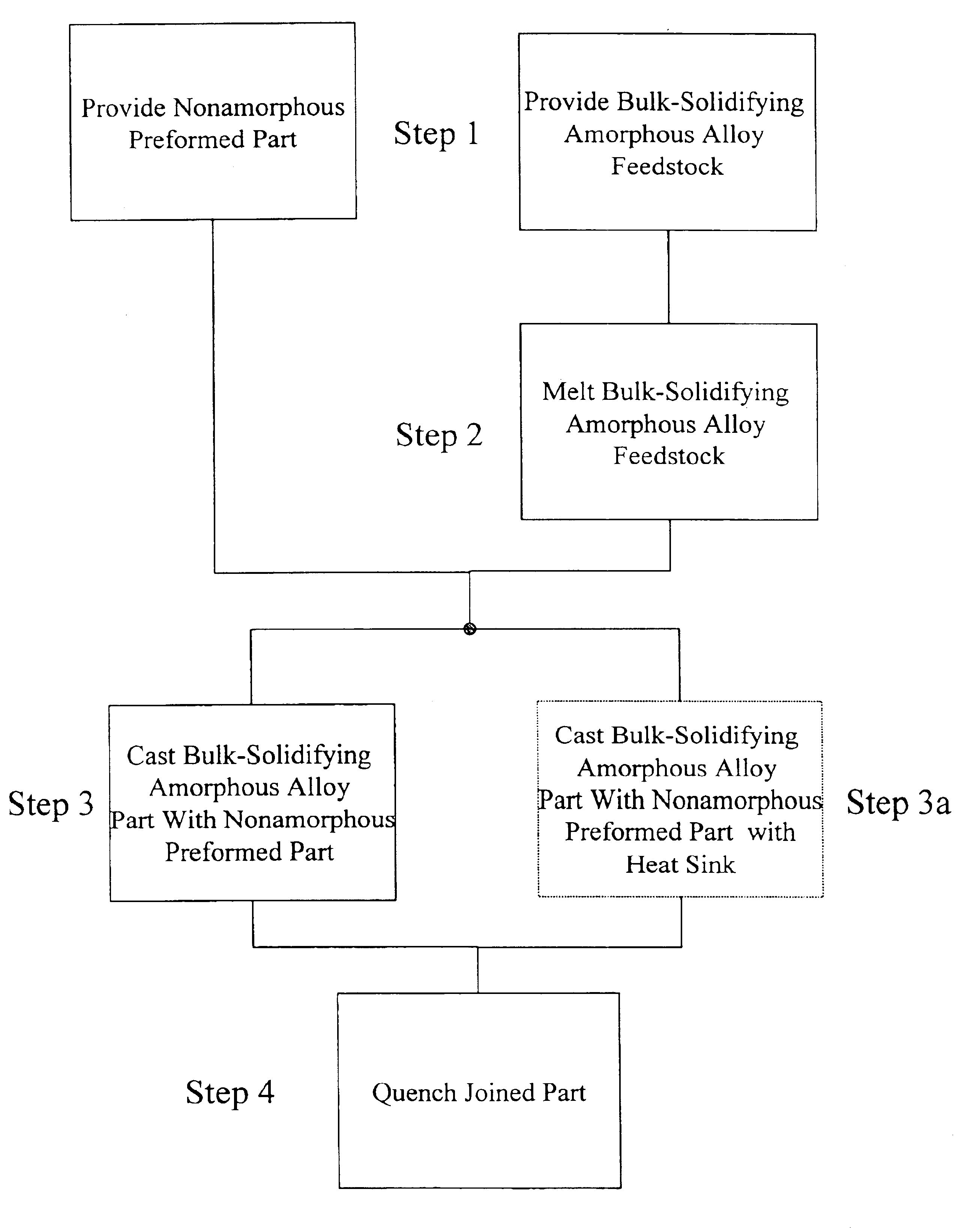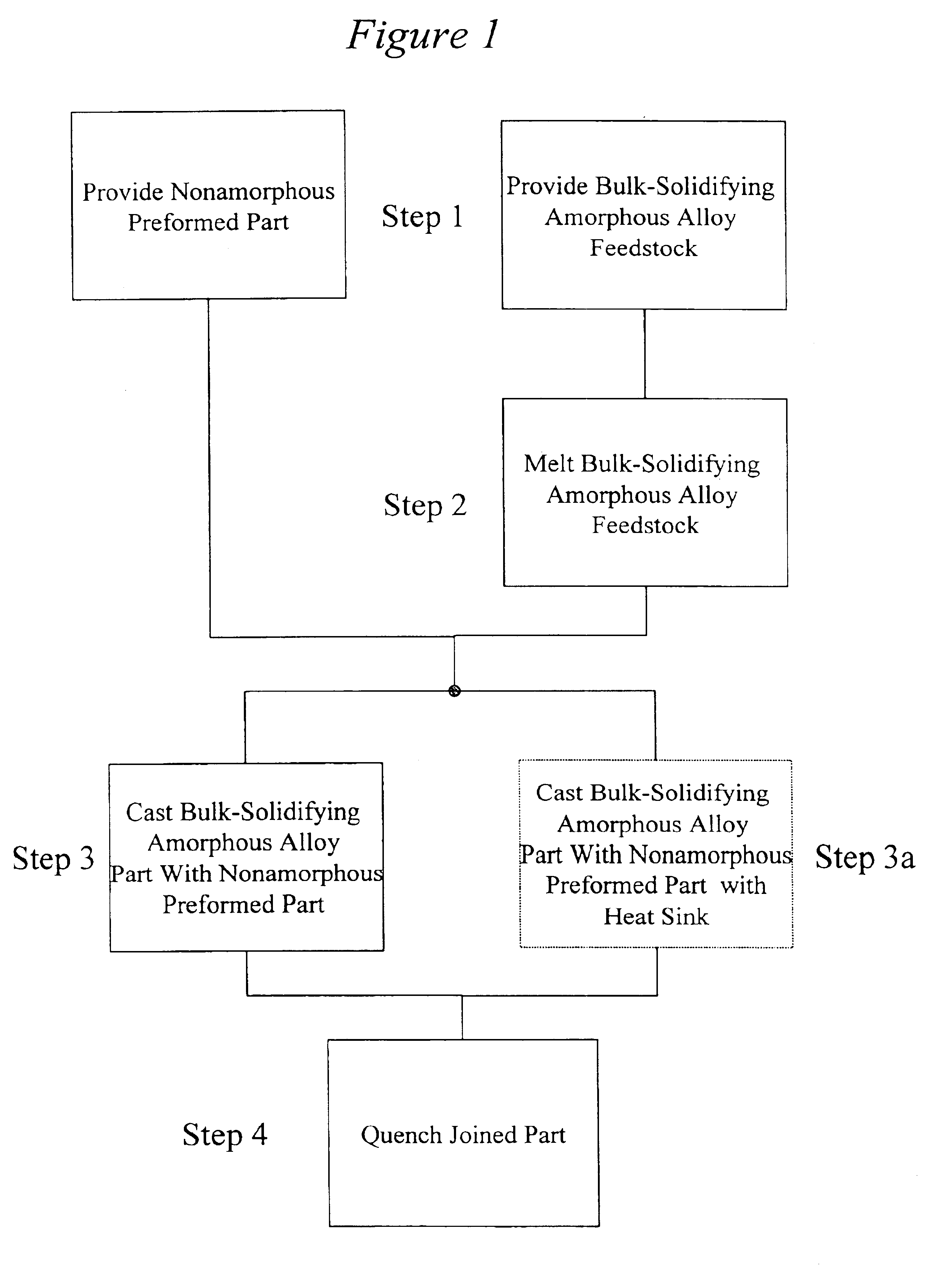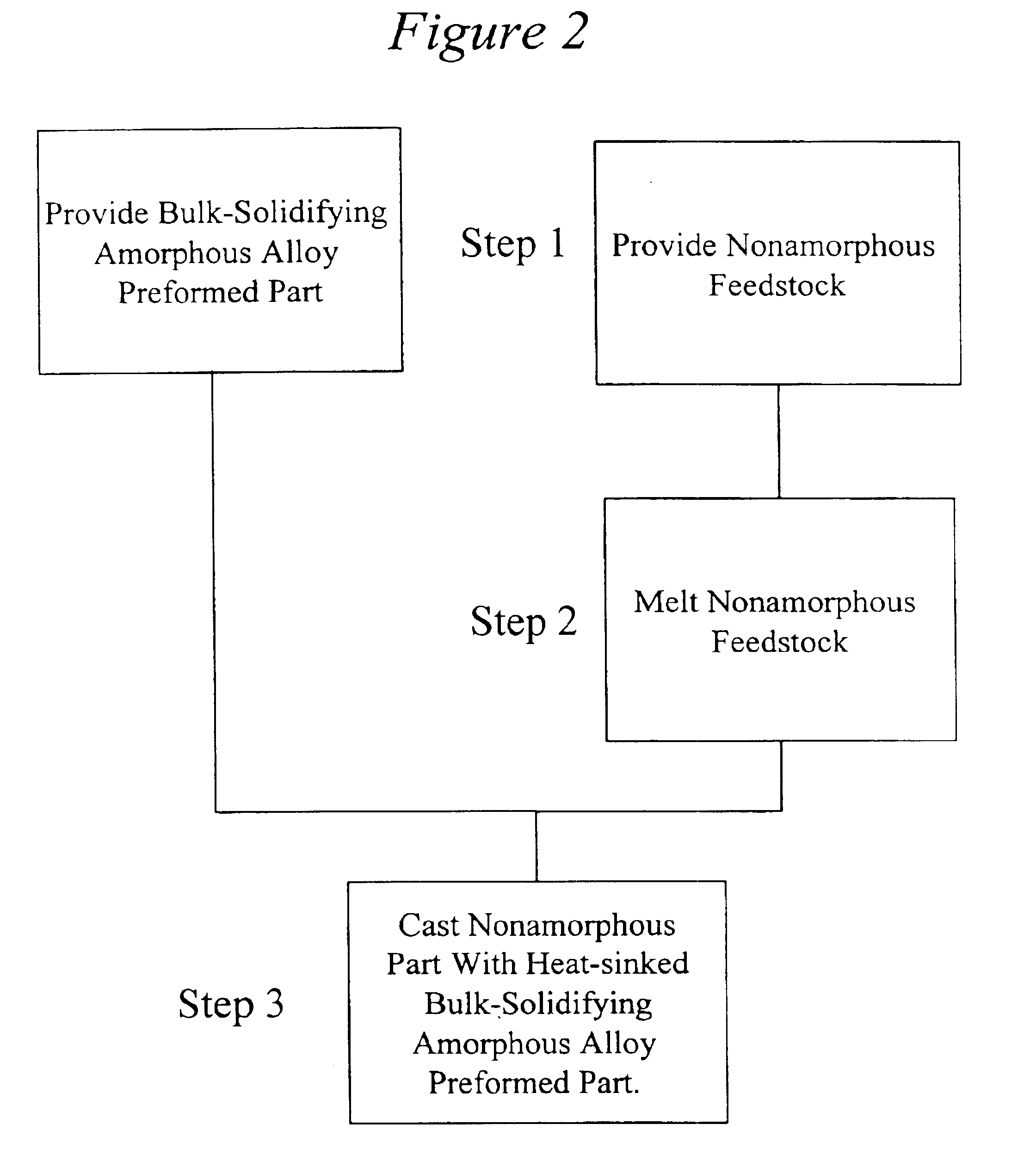Joining of amorphous metals to other metals utilzing a cast mechanical joint
a technology of amorphous metals and mechanical joints, applied in metal-working equipment, welding/cutting media/materials, soldering media, etc., can solve the problems of insufficient brazing and welding techniques and materials, and the mechanical properties and physical properties are at risk
- Summary
- Abstract
- Description
- Claims
- Application Information
AI Technical Summary
Benefits of technology
Problems solved by technology
Method used
Image
Examples
Embodiment Construction
The present invention is directed to a method of joining a bulk-solidifying amorphous alloy to a non-amorphous metal.
The bulk solidifying amorphous alloys are a family of amorphous alloys which can be cooled from the molten state at substantially lower cooling rates, about 500 K / sec or less, than older conventional amorphous alloys and still substantially retain their amorphous atomic structure. As such, they may be produced in amorphous form and with thicknesses of 1 millimeter or more, significantly thicker than possible with the older amorphous alloys that require much higher cooling rates. Bulk solidifying amorphous alloys have been described, for example, in U.S. Pat. Nos. 5,288,344; 5,368,659; 5,618,359; and 5,735,975, the disclosures of which are incorporated by reference.
A family of bulk-solidifying alloys of most interest may be described by the molecular equation: (Zr,Ti).sub.a (Ni,Cu,Fe).sub.b (Be,Al,Si,B).sub.c, where a is in the range of from about 30 to about 75, b is ...
PUM
| Property | Measurement | Unit |
|---|---|---|
| Percent by atom | aaaaa | aaaaa |
| Cooling rate | aaaaa | aaaaa |
| Temperature | aaaaa | aaaaa |
Abstract
Description
Claims
Application Information
 Login to View More
Login to View More - R&D
- Intellectual Property
- Life Sciences
- Materials
- Tech Scout
- Unparalleled Data Quality
- Higher Quality Content
- 60% Fewer Hallucinations
Browse by: Latest US Patents, China's latest patents, Technical Efficacy Thesaurus, Application Domain, Technology Topic, Popular Technical Reports.
© 2025 PatSnap. All rights reserved.Legal|Privacy policy|Modern Slavery Act Transparency Statement|Sitemap|About US| Contact US: help@patsnap.com



